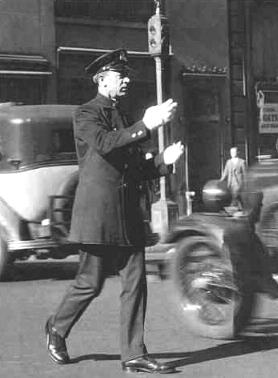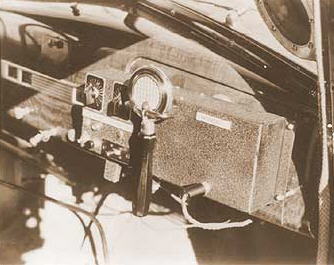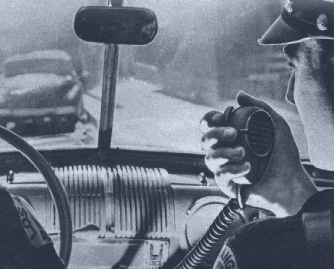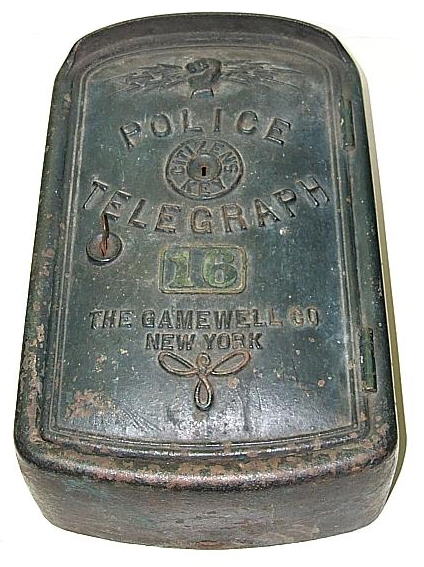Early on and with meager resources law enforcement in America and elsewhere was less sophisticated than it is today. Many smaller towns had only one or two patrolmen, usually underpaid and who had to, in some cases resort to using their own personal vehicle while patroling. Policemen often worked 10, 12 and even 16 hour days, sometimes up to three weeks in a row before having a day off. In the 1920s and 30s some of the various duties of police had included things, such as enforcing code violations, permit inspections, conducting taxi inspections, reporting street light outages, attending to vagrants and also serving as a crossing guard for intersections, churches and schools. There was a close bond between the beat cop and the locals and businessman allowing him to develop a network within the neighborhoo, which made him aware of most crimes occurring on his beat, resulting in a fast arrest. The officer on patrol had to find a telephone in order to communicate with the dispatcher. Many residential homes at that time were without a telephone and the patrolman had to seek out local businesses in order to place his calls. Eventually, "call boxes" and a system of "lights" were in place at various locations throughout the cities and the officer would then call in hourly to see if there was a need for his services. This ring-in was accomplished by pulling a lever inside the box and turning a wheel that sent a coded message via telegraph to the precinct house. These "Police" call boxes were also referred to as the "Gamewell box" - Gamewell Co. being the manufacturer of these and also "Fire" call boxes |






